There are many reasons why UNESCO World Heritage Sites are best discovered by bicycle.
The steady pace of cycling allows you to access less touristed areas to gain a very unique and memorable perspective of an iconic site. Pedalling under your own steam also lends itself to meeting locals, stopping for a chat or a bite to eat along the way.
With more than 1,000 awe-inspiring UNESCO World Heritage Sites to visit, we’ve narrowed down some of our favourites to experience at handlebar level.
1. Nepal - Durbar Squares of Kathmandu Valley
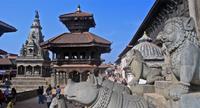 A unique way to visit UNESCO protected Bhaktapur Durbar Square is by bicycle
A unique way to visit UNESCO protected Bhaktapur Durbar Square is by bicycle
Several kingdoms resided in the Kathmandu Valley and each had its own Durbar Square (royal square). The square in Bhaktapur is one of several UNESCO World Heritage Sites in Nepal and rich with temples, monasteries and palaces.
Explore the Kathmandu Valley by Bike
On the 16-day Annapurna Mountain Bike trip you will explore by bicycle a few of the Durbar Squares that are located in the Kathmandu Valley. Then continue into the Himalaya mountains and cycle sections of the Annapurna Circuit around Jomsom and Gorkha.
Find Out More
2. Cuba – Old Havana, Vinales Valley & Trinidad
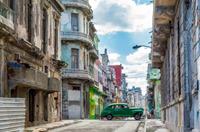 Explore the photogenic streets of Havana in Cuba.
Explore the photogenic streets of Havana in Cuba.
With palm-studded tropical beaches and streets lined by rows of faded colonial buildings painted in muted candy colours - Cuba is an outrageously photogenic destination. It also has nine UNESCO sites including Old Havana, Trinidad, and Vinales Valley, that can be explored by bike.
Experience Cuba on Two Wheels
Soak up Cuba at handlebar level and explore some of the highlights of this Carribean gem on the 12-day Cuba by Bike trip. World Heritage sites visited on this trip include the vibrant Havana, colonial Trinidad and the limestone karsts in the Vinales Valley.
Find Out More
3. India – Taj Mahal, Jaipur, Jaisalmer Fort & more
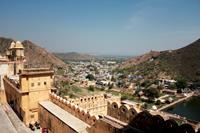 Stunning views over Jaipur from the walls of Amber Fort.
Stunning views over Jaipur from the walls of Amber Fort.
There are 36 World Heritage sites in this melting pot of vibrant cultures and traditions, diverse landscapes and breathtaking architecture. There is no better way to appreciate the diversity of India than by bike, allowing you properly take in the mind-blowing colours, sites, smells and sounds.
Get Active in North India
Discover some of North India’s top World Heritage sites on the 12-day North India Adventure which includes visits to the Taj Mahal, Jaisalmer Fort, Jaipur and Fatehpur Sikri.
Find Out More
4. Ecuador – The Galapagos Islands
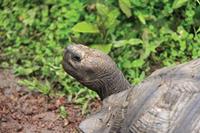 Native giant tortoise on the Galapagos Islands. Photo by Ken Harris
Native giant tortoise on the Galapagos Islands. Photo by Ken Harris
The Galapagos Islands are one of the world’s greatest treasure troves. The awe-inspiring diversity of this archipelago was what inspired Charles Darwin’s theory of evolution. Famous for its exceptional and fearless wildlife, the ancient landscape and rare inhabitants of the Galapagos Islands give visitors a unique view of the natural world.
Galapagos by Land and Sea
Mix it up on the 8-day multi-activity Galapagos Bike, Hike and Kayak. You’ll cycle to the pristine El Garrapatero Beach which is fantastic for swimming, relaxing and observing flora and fauna.
Find Out More
5. Laos – Luang Prabang
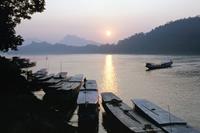 Sunset on the Mekong River, Laos. Photo by Ken Campbell
Sunset on the Mekong River, Laos. Photo by Ken Campbell
Lush, languid and welcoming, it's easy to see why travellers are lured back to Laos. The World Heritage listed tranquil river city of Luang Prabang in is northern Laos, sitting at the sacred confluence of the Mekong River and the Nam Khan. With its quaint French colonial streets, saffron-robed monks and vivid green surrounding mountains Luang Prabang is an excellent place to explore on two wheels.
Combine the Best of Laos and Cambodia
Combine the best of Laos and Cambodia on the 12-day Bike, Hike and Kayak Laos and Cambodia. Starting with a ride through tranquil Luang Prabang, you will cycle and hike between its exquisite golden temples to nearby caves and waterfalls.
Find Out More
6. Cambodia – Angkor Wat Temples
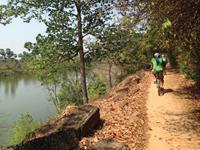 Cycling the hidden paths of Angkor Wat. Photo by Rob Keating
Cycling the hidden paths of Angkor Wat. Photo by Rob Keating
Exploring the Temples of Angkor by bike is a great way to get away from the tourist fray. Riding along the quiet, shady tree-lined dirt trails from temple to temple, you’ll almost feel like you’re alone in one of the world’s most visited ancient marvels.
Cycle the Hidden Paths of Angkor Wat
Embark on the 4-day Angkor Wat Cycle, exploring the ancient Khmer temples as well as the lesser known Rolous group of temples.
Find Out More
7. China – Lijiang
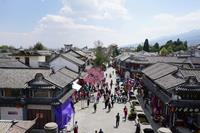 Beautiful World Heritage Lijiang in Yunan Province
Beautiful World Heritage Lijiang in Yunan Province
With cobblestone streets, rickety wooden buildings and gushing canals – it’s no wonder the time-locked World Heritage city of Lijiang is a highlight of the Yunnan Province. Cycling to a surrounding village is an ideal way to escape the tourist crowds and discover the less visited corners of this quaint and magical town.
Discover the 'Old Town' Lijiang
The 14-day Yunnan Cycle and Tiger Leaping Gorge combines some of the top attractions in the Yunnan Province. It includes a ride through the surrounding ancient villages of Lijiang and a hike through the dramatic Tiger Leaping Gorge.
Find Out More
8. Sri Lanka – 5 UNESCO World Heritage Sites
 The Old Town of Galle and its Fortifications are a UNESCO World Heritage Site
The Old Town of Galle and its Fortifications are a UNESCO World Heritage Site
No trip to Sri Lanka is complete without seeing at least one of it's many UNESCO World Heritage Sites. On the cycling holiday with World Expeditions, you'll even discover five of them! Take in the ancient cities of Polonnaruwa and Sigiriya, the Golden Temple of Dambulla and Dutch colonial heritage in Galle. Kandy is a sacred city and a stronghold of the Sinhala Kings. At 488m, it's also Sri Lanka's hill capital, so you may want to exercise your legs ahead of this trip!
See them all in Sri Lanka
Yield to the cadence of Sri Lanka from the seat of a bicycle on the 11-day Sri Lanka by Bike cycling holiday. From capital Colombo, get on your bicycle to venture first south along the coast and then inland via rain forest, hill stations, religious monuments and colonial heritage.
Find Out More
9. Peru – Cusco
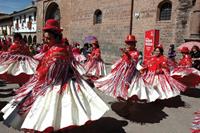 Festival in Cusco, Peru. Image by Donna Lawrence
Festival in Cusco, Peru. Image by Donna Lawrence
Step back into the cosmic realm of the ancient Andean culture in the World Heritage listed city of Cusco in Peru. It’s a place where old traditions are not forgotten as pagan tradition mixes with Catholic ritual at colourful and vibrant festivals. Hop on your bike to explore the more remote dust-worn corners of this culturally rich city.
Embark on a Family Adventure in Peru
Take the whole family on a 16-day multi-activity adventure of a life-time on the Family Adventure in Peru. On this tour you will gain a unique perspective of Cusco and take a 3-hour ride in the open fields surrounding the city.
Find Out More
10. Vietnam - Halong Bay
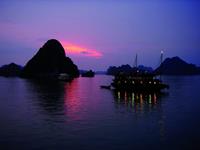 Gorgeous sunset at Ha Long Bay, Vietnam. Image by Julia Xiao
Gorgeous sunset at Ha Long Bay, Vietnam. Image by Julia Xiao
With its striking landscapes, gripping history and rich culture, Vietnam is an outstanding destination on all fronts. The World Heritage-listed Halong Bay is a bucket list destination. Many travellers flock here to witness firsthand the breathtaking turquoise waters and limestone islands. Cycle through the forested mountains, fertile farmlands and down scenic backroads as you travel to Halong Bay by bike.
Ride from Hanoi to Halong Bay
This is the ideal active adventure for those short on time in Northern Vietnam. On the 5-day Hanoi to Halong Bay by Bike trip you will experience some of the top sites of the region by bike, as you cycle from Hanoi to the picturesque Halong Bay.
Find Out More
Why cycle with us?
World Expeditions began organising its first cycling holidays in India in 1978. Today, we operate a broad range of cycling holidays to suit all levels of abilities around the world. Our cycling trips include comfortable geared bikes, support crew and a backup vehicle. In addition, you'll ride at a steady pace, so you are free to enjoy the scenery along the way.
>> Browse all Cycling Journeys